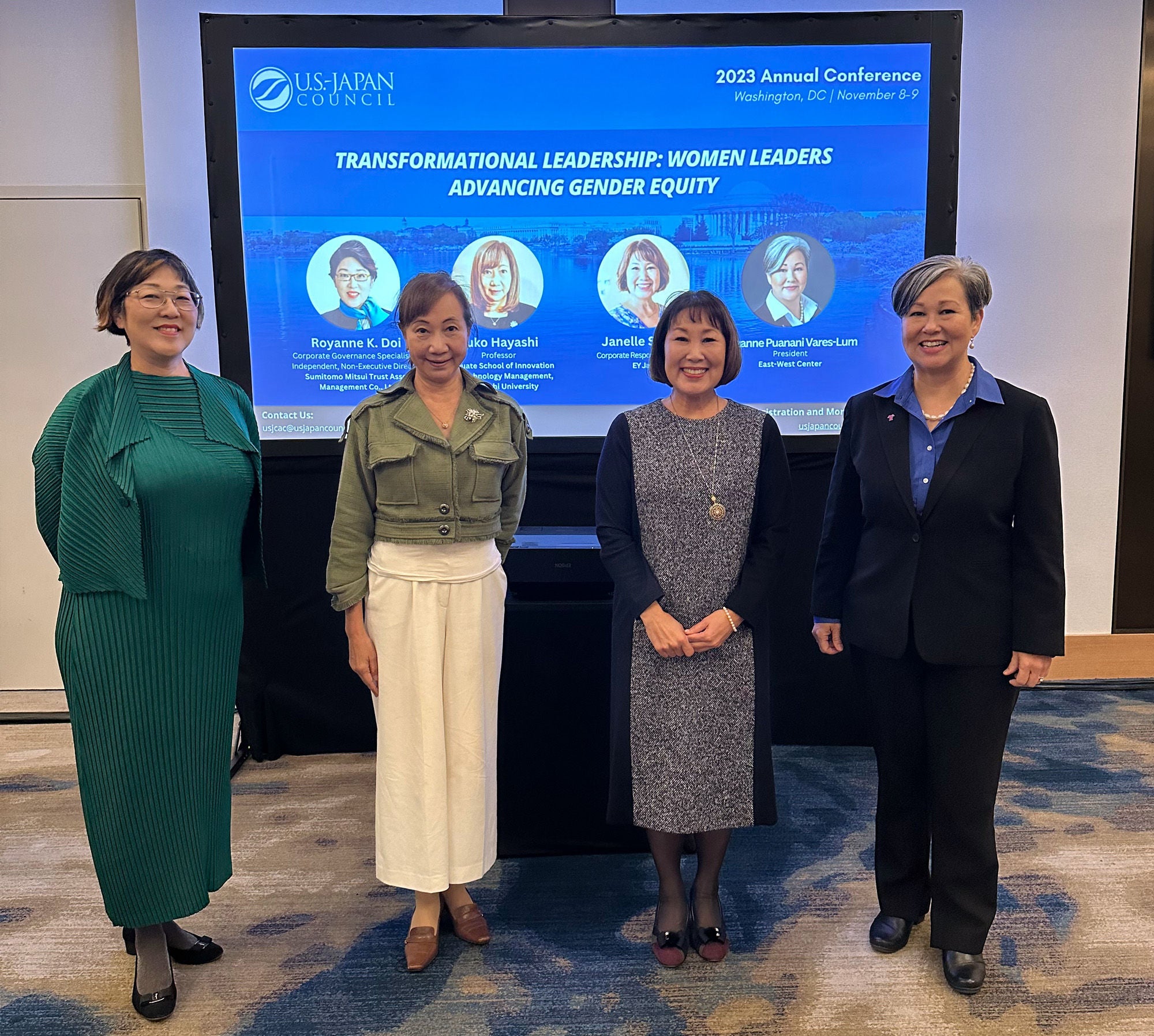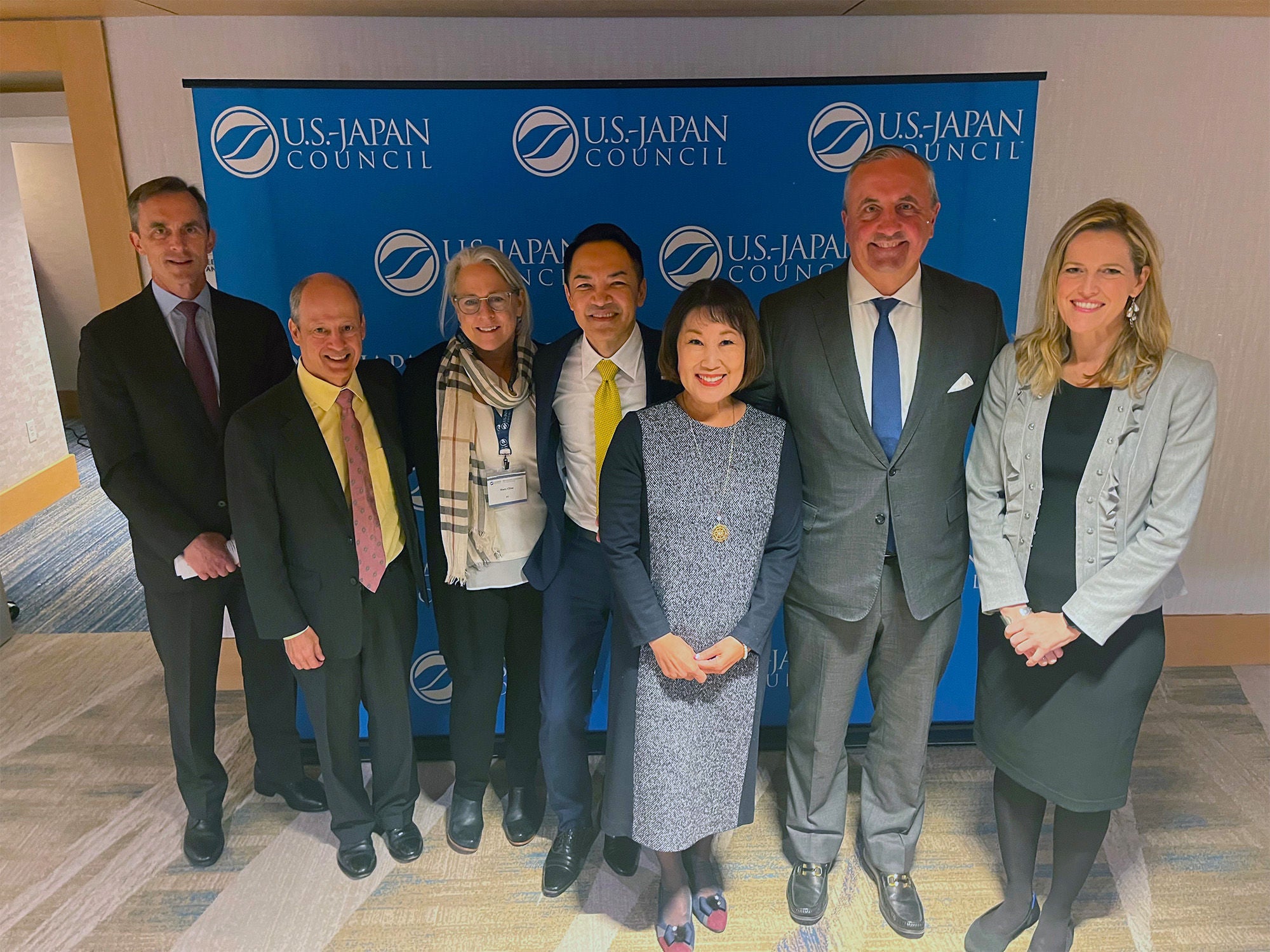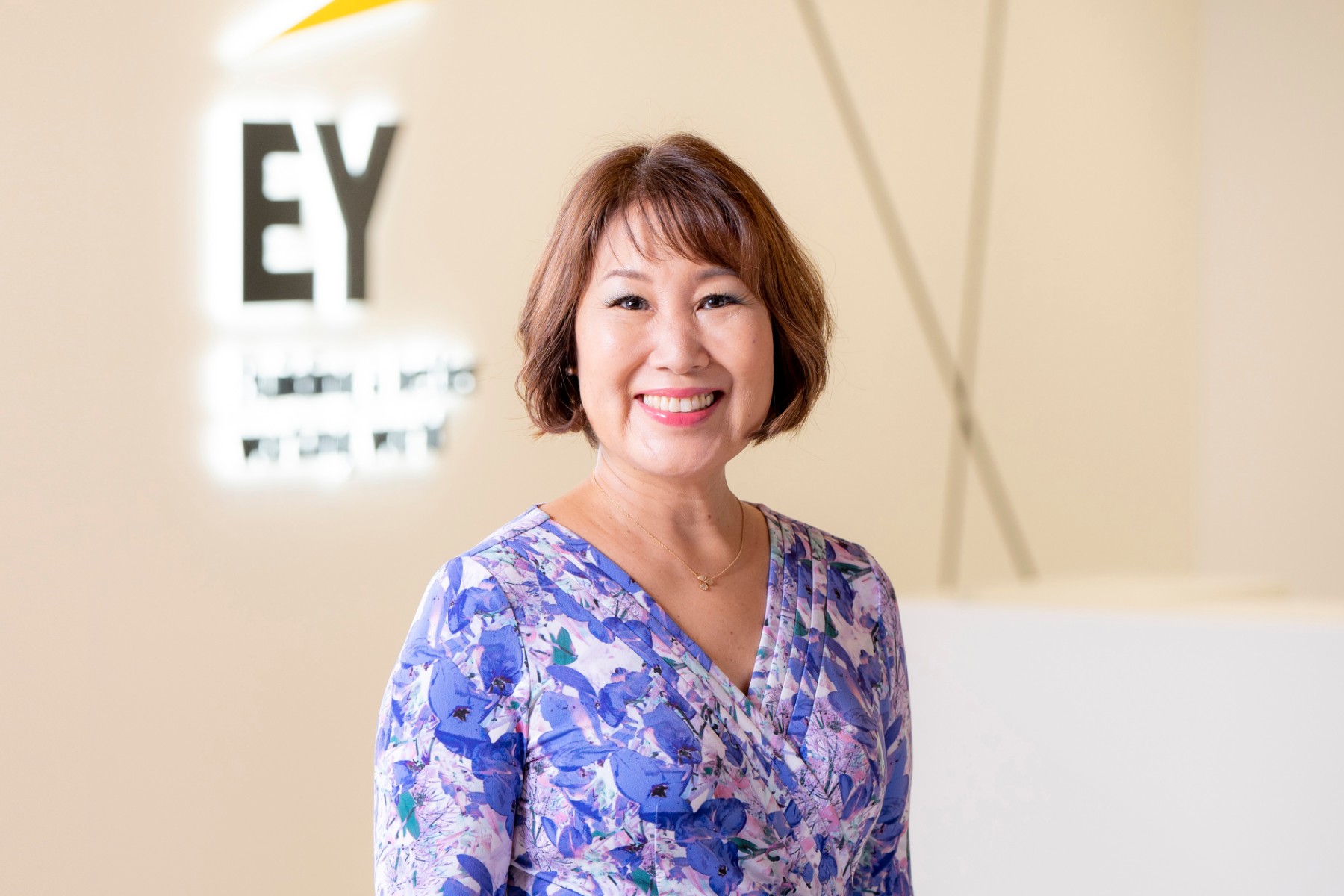EY refers to the global organization, and may refer to one or more, of the member firms of Ernst & Young Global Limited, each of which is a separate legal entity. Ernst & Young Global Limited, a UK company limited by guarantee, does not provide services to clients.

Embedding DE&I into your leadership style can foster an environment where everyone can flourish.
Executive summary
- Making career opportunities more visible and sharing promotion criteria can motivate women.
- Developing leadership pipeline programs, women’s networks, and mentorships can provide guidance and support.
How can transformative leadership advance women’s careers?
As one of a handful of leaders in EY Japan who has held a global role (Leader of the Women Athletes Business Network) and is now Corporate Responsibility Leader, I am often asked how diversity, equity and inclusion (DE&I) intersects with leadership. In short, leaders should be the beating hearts of organizations, providing vision, direction, and inspiration while creating an environment conducive to the success of all.
I spoke recently at the US–Japan Council Annual Conference in Washington DC, on a panel entitled “Transformational leadership: Women Leaders Advancing Gender Equity,” alongside Yuko Hayashi PhD, Professor at Yamaguchi University, and Suzanne Vares-Lum, President of East-West Center, which promotes relations between the United States and Asia-Pacific.
This article will introduce my remarks and outline EY Japan’s DE&I efforts in the lead up to our campaign for International Women’s Day in March, 2024.

Why diversity matters
I was joined at the Conference by EY’s Global Chairman and CEO Carmine Di Sibio, who shared that building relationships with people and cultures who are different is part of EY’s DNA. We have DE&I metrics to check progress and ensure transparency, and consider not only the representation of women and minorities but also diversity of experiences, mobility, and engagement.
My background is an example of the value offered by someone’s diverse “journey.” My purpose has long been to inspire and create positive change in organizations and people, but I cultivated new roles that did not exist, expanded responsibilities, and created my own job descriptions. The reason was part necessity—I began working in DE&I at a time when DE&I was a “nice-to-have,” rather than a “must-have” initiative—but also because I saw the potential in doing things differently.
I came across many roadblocks, not least of which was relating my US-based work experiences to Japan, where the word “inclusion” was not widely recognized at that time. Rather than exploring semantics, I focused on inclusive traits: respect, support, and belonging, while drawing on my bicultural background to bridge greater understanding between the US and Japan.
In the end, by leveraging data, I was able to change mindsets so people adopted DE&I as a business strategy, and clients valued the learnings, thereby strengthening client relationships.
The experience taught me the need to strive for more than transformational leadership, which brings about major change; we need to develop transformative leaders who have the power to transform.

Accelerating women’s advancement
Transformative leaders inspire people to achieve unexpected or remarkable results. They foster significant change and act as role models. Now, more than ever, they also need to embed DE&I thinking in their leadership style and foster a work environment and culture where everyone, regardless of their gender, can flourish.
According to United Nations’ The Gender Snapshot 2022¹, it will take 286 years to close the global gender gap.
At EY, we are not prepared to wait. UN Women states that empowering women in the economy and closing gender gaps in the world of work are key to achieving the 2030 Agenda for Sustainable Development². To facilitate a faster path to gender equity, EY is working to build supportive environments without conscious and unconscious bias, to proliferate flexible working and promote its connection to wellness, and to enlighten the path to leadership.
American activist Marian Wright Edelman famously said “You can’t be what you can’t see,” and a similar concept could also be said: “You can’t get there if you don’t know the way.” Having blazed my own career trail, I know the importance of following (or making!) your career path, building a purposeful network, sharing your vision for the future, and influencing others to follow you.
We need everyone to help women find the way, and transformative leaders can set an example by increasing visibility of career opportunities, sharing promotion criteria, as well as developing leadership pipeline programs, women’s networks, and mentorships.
Mentorship is beneficial at any career stage. Since my early days of work, I have benefited from mentorship and I am now a mentor as well as a mentee. When I see my mentees and colleagues getting hired for new roles, having more confidence, obtaining a promotion, or starting their own business, I am motivated to help others.
Transformative leaders recognize that others’ success leads to their success and that of the organization.
A wide network, too, is helpful for gender equity, according to a study in Harvard Business Review³, which shows women who have an inner circle of close female contacts are more likely to land executive positions with greater authority and higher pay.
EY aims to promote women helping women at work and to create relatable role models.
We need to remember that role models don’t need to hold C-suite positions; they can be middle managers or even women who are simply a few steps ahead of their peers. By fostering an environment where mentoring is commonplace, we can also create more role models, thereby building a pipeline of leaders for the future.
With Japan ranked lowest among G7 countries in the World Economic Forum’s Global Gender Gap Report 2023⁴, achieving gender equity seems daunting, but transformative leaders can take these steps towards a brighter future for women and a better working world.
Article references
- "Progress on the Sustainable Development Goals: The gender Snapshot," UN Women, www.unwomen.org/sites/default/files/2022-09/Progress-on-the-sustainable-development-goals-the-gender-snapshot-2022-en_0.pdf (Accessed December 27, 2023)
- "Facts and Figures: Economic Empowerment," UN Women, www.unwomen.org/en/what-we-do/economic-empowerment/facts-and-figures (Accessed December 27, 2023)
- "Research: Men and Women Need Different Kinds of Networks to Succeed," Harvard Business Review, hbr.org/2019/02/research-men-and-women-need-different-kinds-of-networks-to-succeed(Accessed December 27, 2023)
- "Global Gender Gap Report 2023," World Economic Forum, weforum.org/publications/global-gender-gap-report-2023/in-full/benchmarking-gender-gaps-2023/(Accessed December 27, 2023)
Related News release
・EY Ripples program aims to positively impact the lives of 1 billion people by 2030
Summary
Empowering women at work requires being open about the way to advance one’s career. At EY, we believe promoting women helping women and creating more relatable role models are among the ways we can advance women’s careers, thereby contributing to a brighter future.


